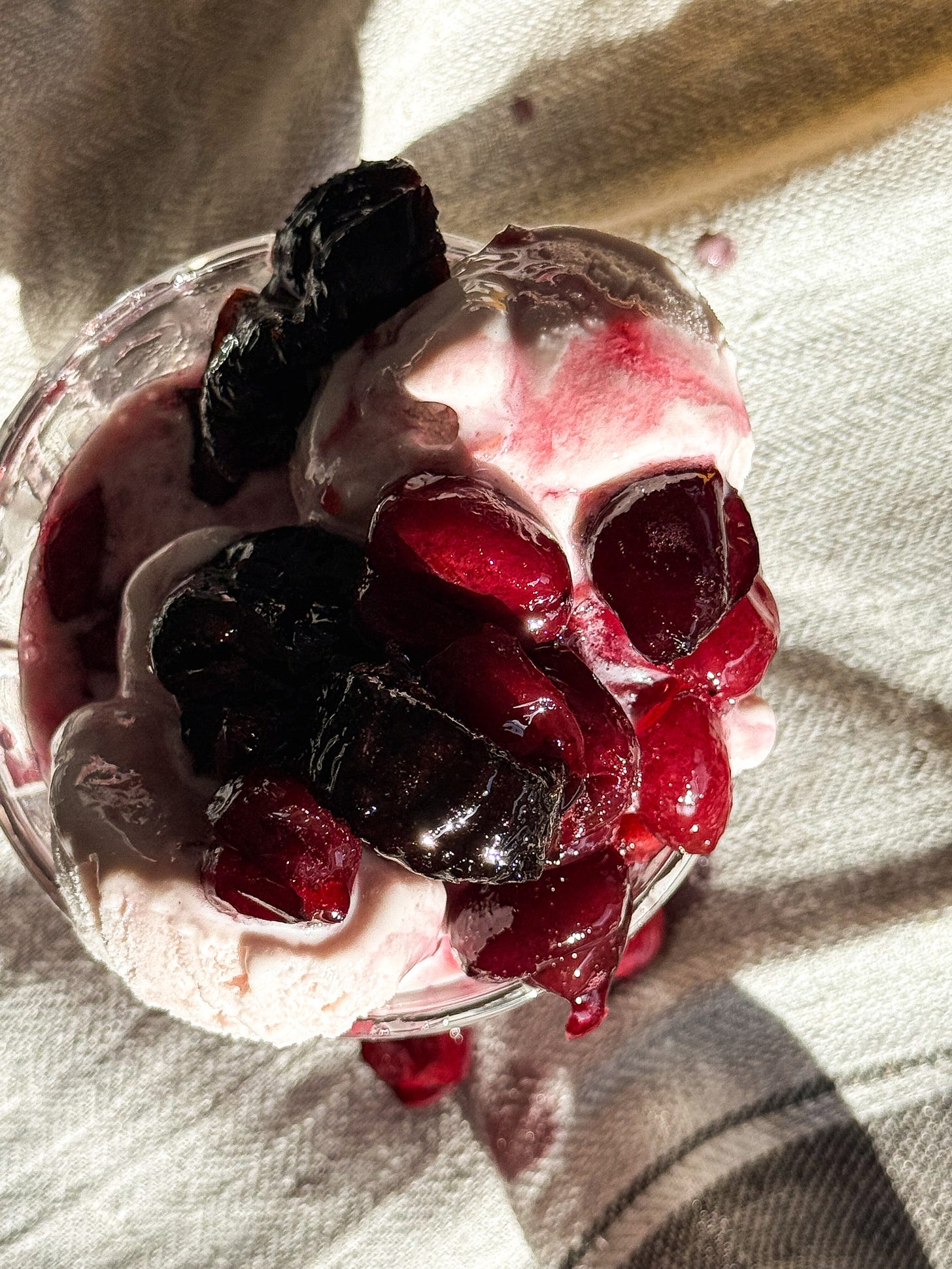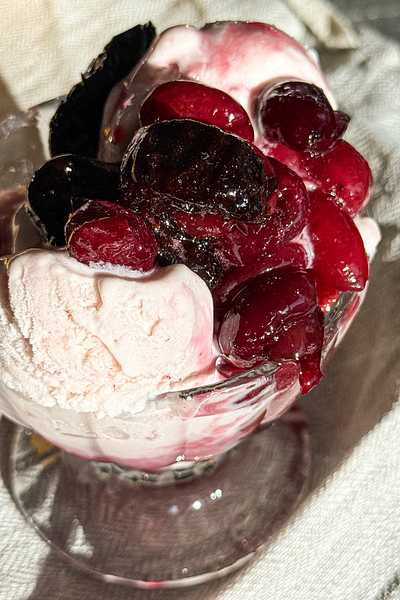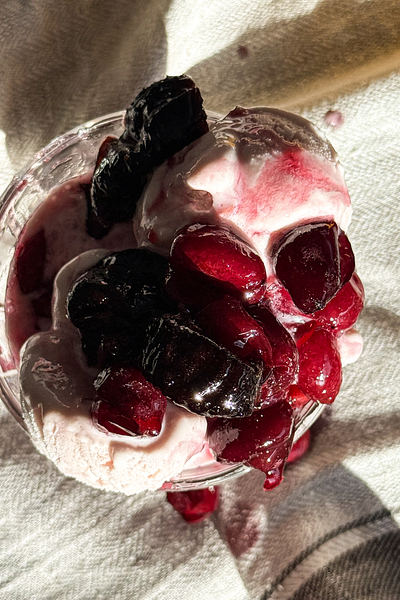Prune-Cherry Jubilee
Prune-Cherry Jubilee
In most Cherry Jubilee recipes, the cherries are just barely cooked, warmed through, and then flambéed. But I like to let mine simmer a bit longer. I want the cherries to soften just enough for them to slump slightly so that they match the lush, tender texture of the prunes this way every bite has the same jammy tenderness. Otherwise, the prunes feel rich and velvety while the cherries stay too firm, and to me, it just doesn’t feel like they’re dancing to the same song. Here, they melt together in a syrup that’s bright with citrus, deep with aged vinegar, and finished with a fiery splash of cachaça (my very Brazilian touch). The color turns richer thanks to this extra step, and the syrup becomes beautifully glossy and velvety, no need for thickeners like cornstarch. It’s simple, but special.
Makes 4-6 servings
300 g (2 cups) pitted cherries, fresh or frozen
150 g (1 cup) pitted California Prunes
65 g (1/3 cup) turbinado sugar or dark brown sugar
Zest of ½ orange (about 1–2 teaspoons) or 1 tangerine (I prefer tangerine)
60 ml (1/4 cup) fresh juice from 1 orange or 2 tangerines
1.5 g (1/4 teaspoon) kosher salt
15 ml (1 tablespoon) aged sherry vinegar (start with 1 teaspoon, add more to taste)
80 ml (1/3 cup) cachaça
Vanilla ice cream, Greek yogurt, or crème fraîche, for serving
In a wide (preferably stainless steel) skillet over medium heat, combine the sugar, juice, cherries, and prunes. Stir gently until the sugar begins to melt and the fruit releases its juices, about 2–3 minutes.
Add the citrus zest and salt. Let it simmer for 2–3 minutes, until the prunes look plump and glossy, the cherries are tender, and the syrup thickens slightly.
Lower the heat slightly and stir in the aged sherry vinegar. Start with 1 teaspoon if you’re unsure, then taste and adjust. Aged vinegar brings depth, not sharpness, when used sparingly.
Now carefully pour the cachaça into the pan from a measuring cup (never directly from the bottle). If you’re comfortable flambéing: remove the pan from the heat, ignite the alcohol with a long match or lighter, and return it to the heat to burn off. Let the flames subside naturally, swirling the pan gently if needed. The flames will burn off in 15–30 seconds. If you don’t feel comfortable flambéing, no problem, the alcohol will cook off regardless.
Important: Always take caution with flambéing. Never pour alcohol directly from the bottle near a flame.
Simmer for 1–2 minutes more, just until the syrup is velvety and coats the fruit. Spoon warm over vanilla ice cream, Greek yogurt, or serve with a generous dollop of crème fraîche. You can also serve it with crumbled buttery shortbread or almond cookies for texture.
If you can’t find cachaça, mild white rum, kirsch, brandy, or cognac also work beautifully.
Storage: Let the fruit cool to room temperature, then transfer to an airtight container and refrigerate for up to 5 days. To reheat, warm gently in a saucepan over low heat until heated through, avoiding boiling to preserve texture.










